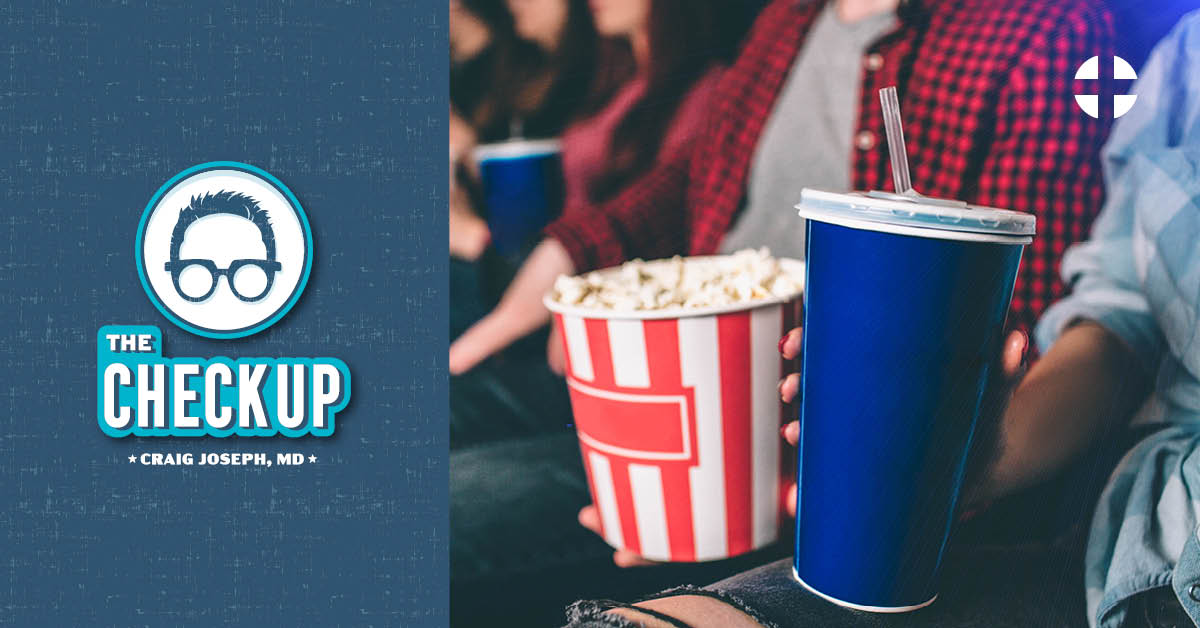
Who remembers taking their first flight after 9/11? What’s that you say? You were only ten years old at the time, so your memories are a bit hazy. I’ll ignore that segment of the reading audience and continue with the – ahem – more seasoned readers.
Back in 2001, I was practicing primary care pediatrics full time, so my airplane trips were pretty infrequent. It might have been four or five months after the terrorist attacks that I took my family on a trip to visit relatives. As we wheeled our luggage into the airport, we were greeted with the sight of soldiers in camouflage fatigues holding large automatic weapons. My young children were naturally excited and curious, but my wife and I were a bit taken aback. The need to have fully armed National Guard at the airport check-in counter many months after 9/11 seemed questionable. It was heartening in a way, of course, but looking back, it seemed that the soldiers were there less to defend and more to reassure. Acts like this became known to some as security theater.
While seemingly a pejorative term, security theater implies that you feel secure, but may in fact not have real security. These acts occur to make you feel better, but don’t actually improve the situation. The global pandemic in which we are living has now given way to a similar phenomenon. In an effort to make shoppers and office workers more comfortable about being away from home, cleaners who have typically worked behind the scenes or after hours are now being put to work during the day where all can see. They’re scrubbing and sanitizing in front of you so you will know the cleaning is really happening. However, as we learn more about the SARS-CoV-2 virus, it seems we’re much more likely to contract COVID-19 from breathing than from touching. Hence, the new term sanitation theater has been born.
To be clear, I don’t think that those who engage in security theater or sanitation theater are bad people who are trying to dupe the public. Those soldiers were at the airport because we didn’t know if there were other terrorist threats lying around the corner. The cleaning folks were (or are) there because even though respiratory spread of SARS-CoV-2 is much more likely than contact spread, it’s still theoretically possible to touch a surface and get infected. The “theater” occurs when we don’t know what we don’t know, so we feel we must do something because surely something must be better than nothing.
I spend most of my time working on issues in healthcare and healthcare information technology (HIT). I’ve seen my fair share of attempts at making things better or safer which, in the long run, I think will do neither. In my sometimes-abrupt way, I’ve called these things wastes of time. Perhaps, a more appropriate term is electronic health record (EHR) theater.
While I’m a big fan of government interventions to promote patient safety or the intelligent use of technology, sometimes the immortal words spoken by my senior surgery resident to me when I was a new third-year medical student still resonate: “You wanna help me? Don’t help me.” [NB: He was not a good teacher.] While I support the desire to decrease or eliminate inappropriate clinical testing, perhaps making physicians jump through a series of hoops isn’t the best way to achieve the lofty goal. Putting needless obstacles in clinician workflows to discourage them from ordering a CT scan is unlikely to move the dial. I’d posit that ongoing physician training combined with gentle guidance in the EHR is the more successful path.
There are quality improvement (QI) groups that purport to judge an EHR’s safety by looking at, among other things, certain alerts that pop up. For example, there may be specific medications that shouldn’t be administered together, and QI groups make judgments based on whether the physician is notified when they order those meds. At first blush, this seems perfectly reasonable. If meds interact with one another, patients shouldn’t be taking them at the same time. However, sometimes the interactions are infrequent and minor. Sometimes the benefits of the meds far outweigh the risks or disadvantages. In these cases, it’s reasonable and prudent to consider suppressing the alert.
When contemplating different forms of clinical decision support (CDS), informaticians must take into account alert fatigue, which occurs when clinicians become numb to frequent and often less important pop-up warnings in the EHR. Over-alerting can actually lead to the exact outcome that the alert was meant to prevent. Physicians see so many alerts that they just click through them to make them go away. This sort of CDS is an example of EHR theater.
While physicians use EHRs to prescribe all sorts of medications, we generally expect a few more hoops to jump through when ordering narcotics or other controlled substances. The DEA mandates two-factor authentication when a doctor wants to send an order for such a drug. This means that even though the physician is logged into the EHR, they must re-validate their identity by another means, typically something like a fingerprint scan or a code sent to their phone. This makes sense; controlled substances have significant abuse potential and must be closely monitored. Yet, some institutions or states mandate this extra authentication for all medications, be it oxycodone, amoxicillin, or vitamin D, justifying this requirement as “one can’t be too careful.” Are you sensing EHR theater? I am!
I’m confident that we’re all not going to agree on the sorts of things that can be defined as EHR theater. Some might see benefit where all I see is distraction. Yet, identifying the issue and having the conversation will be helpful as we evolve healthcare IT and the physician’s interaction with it.